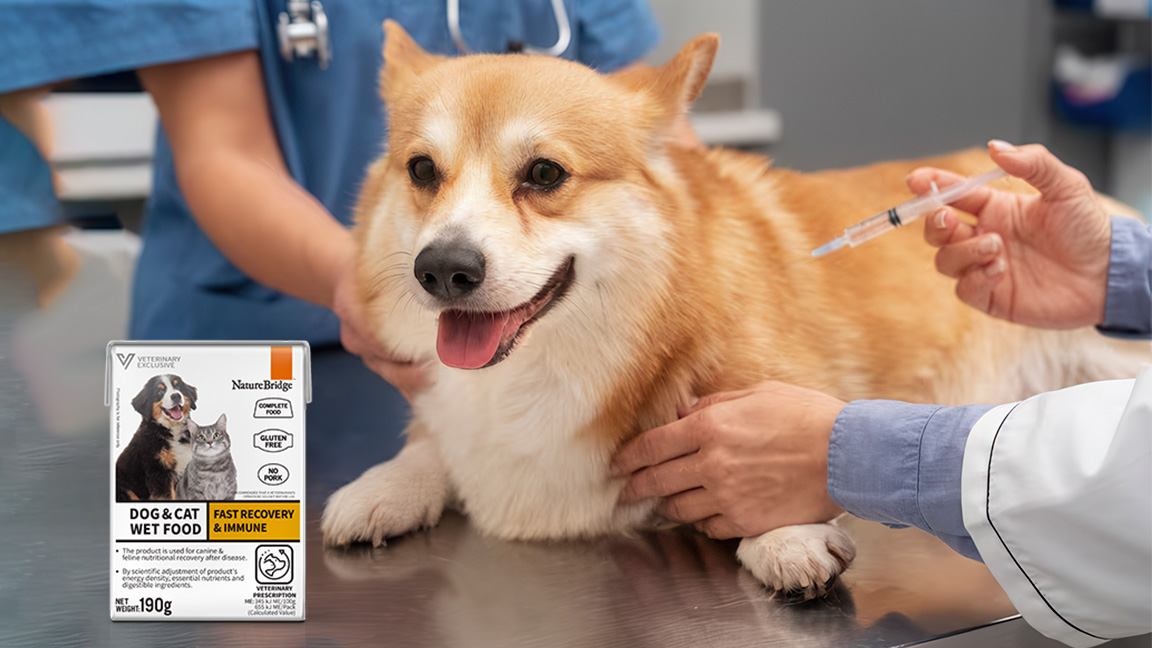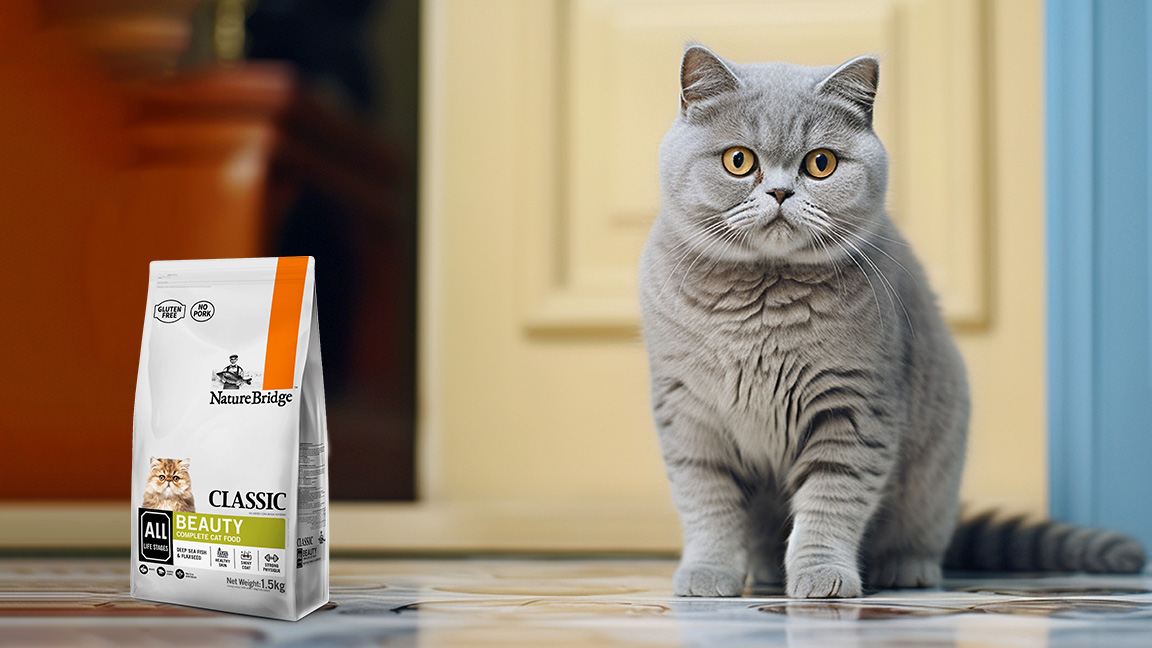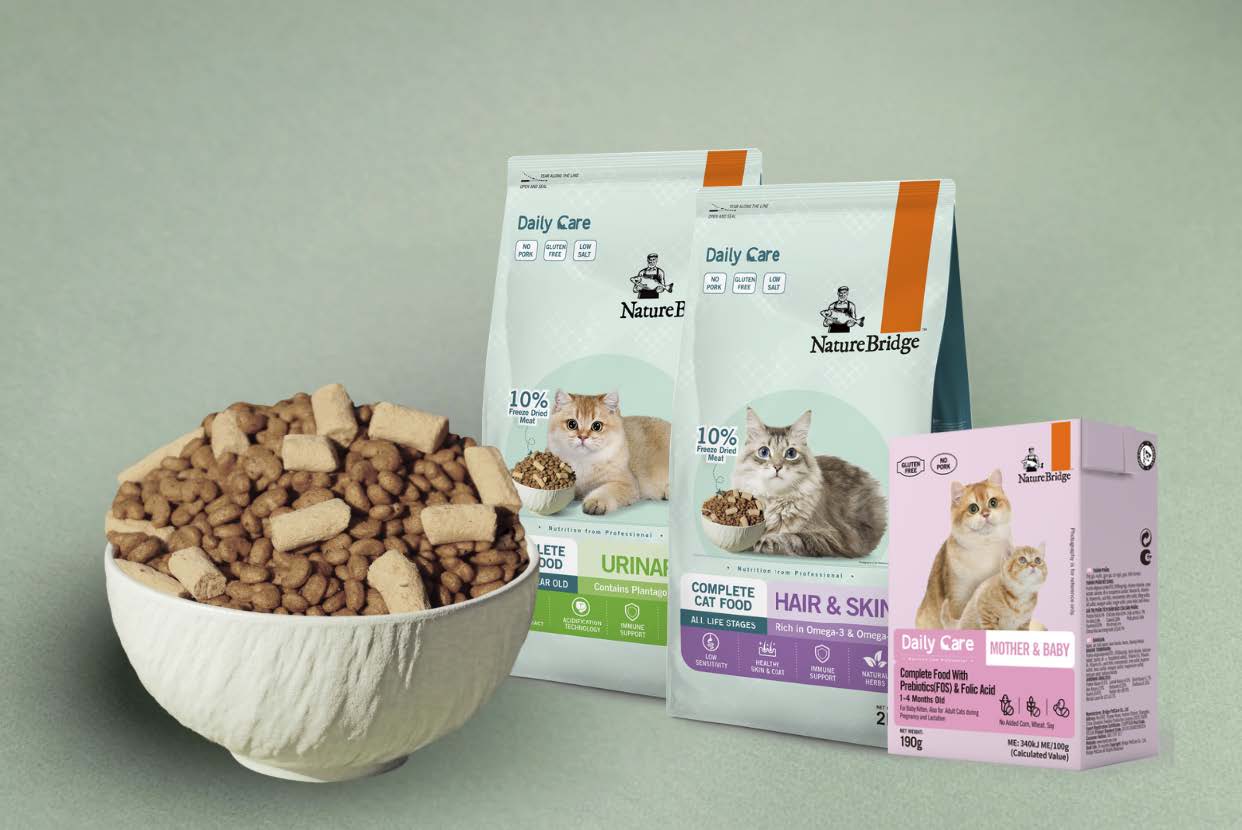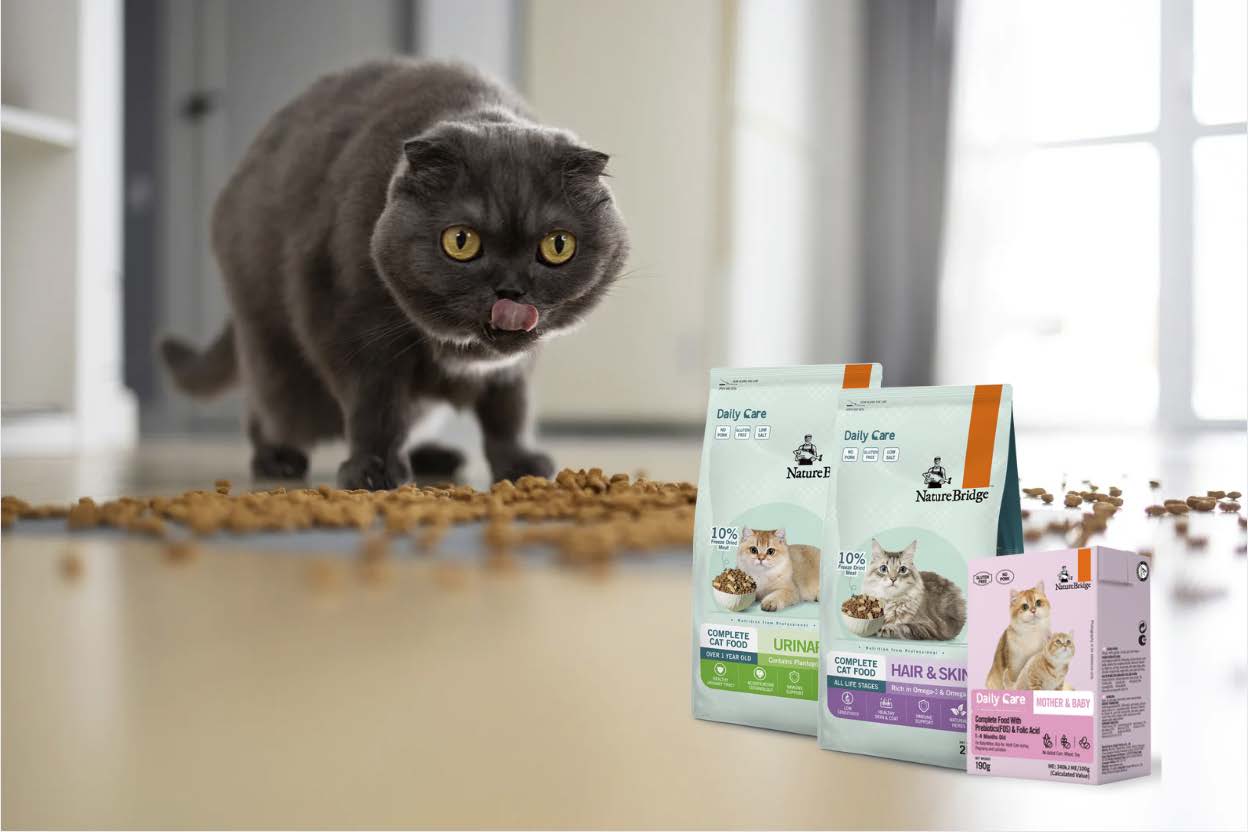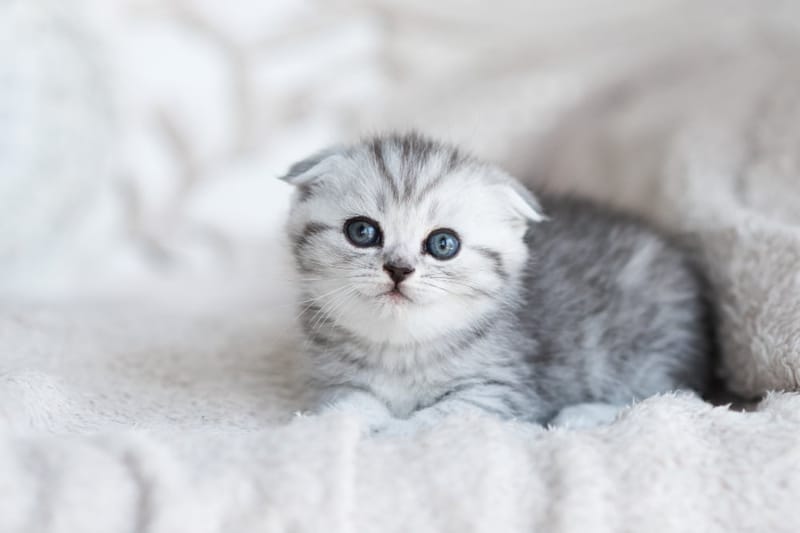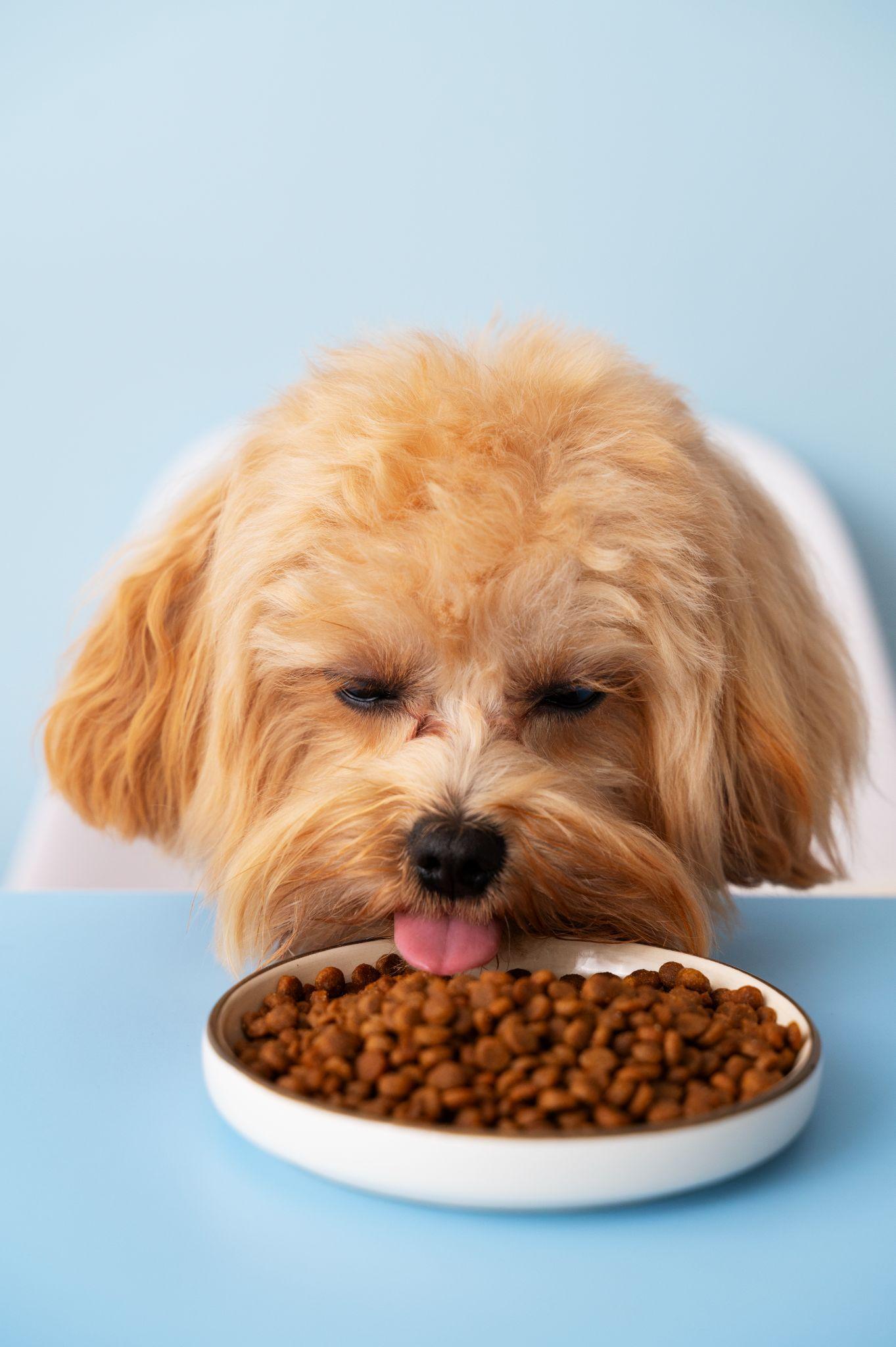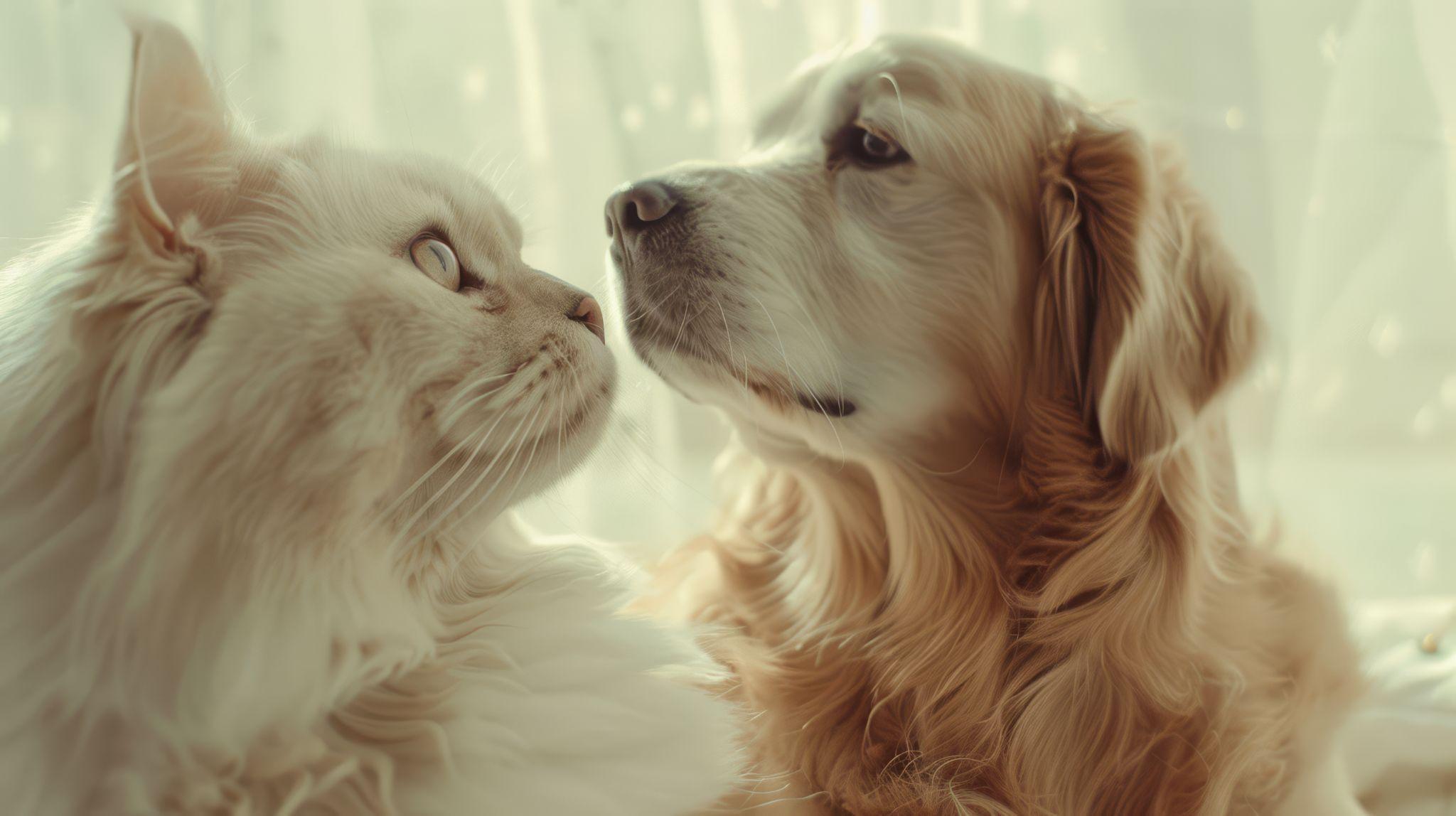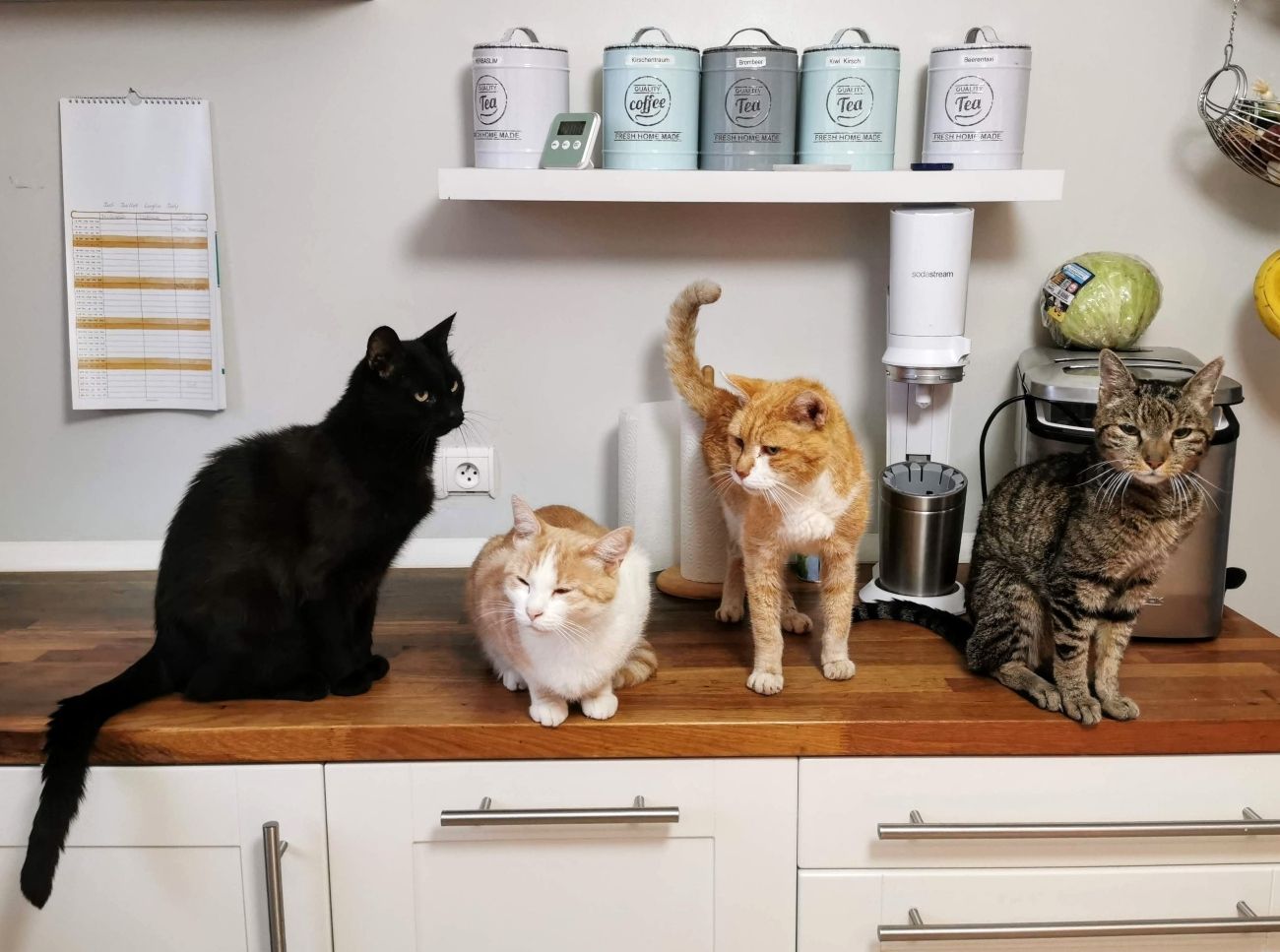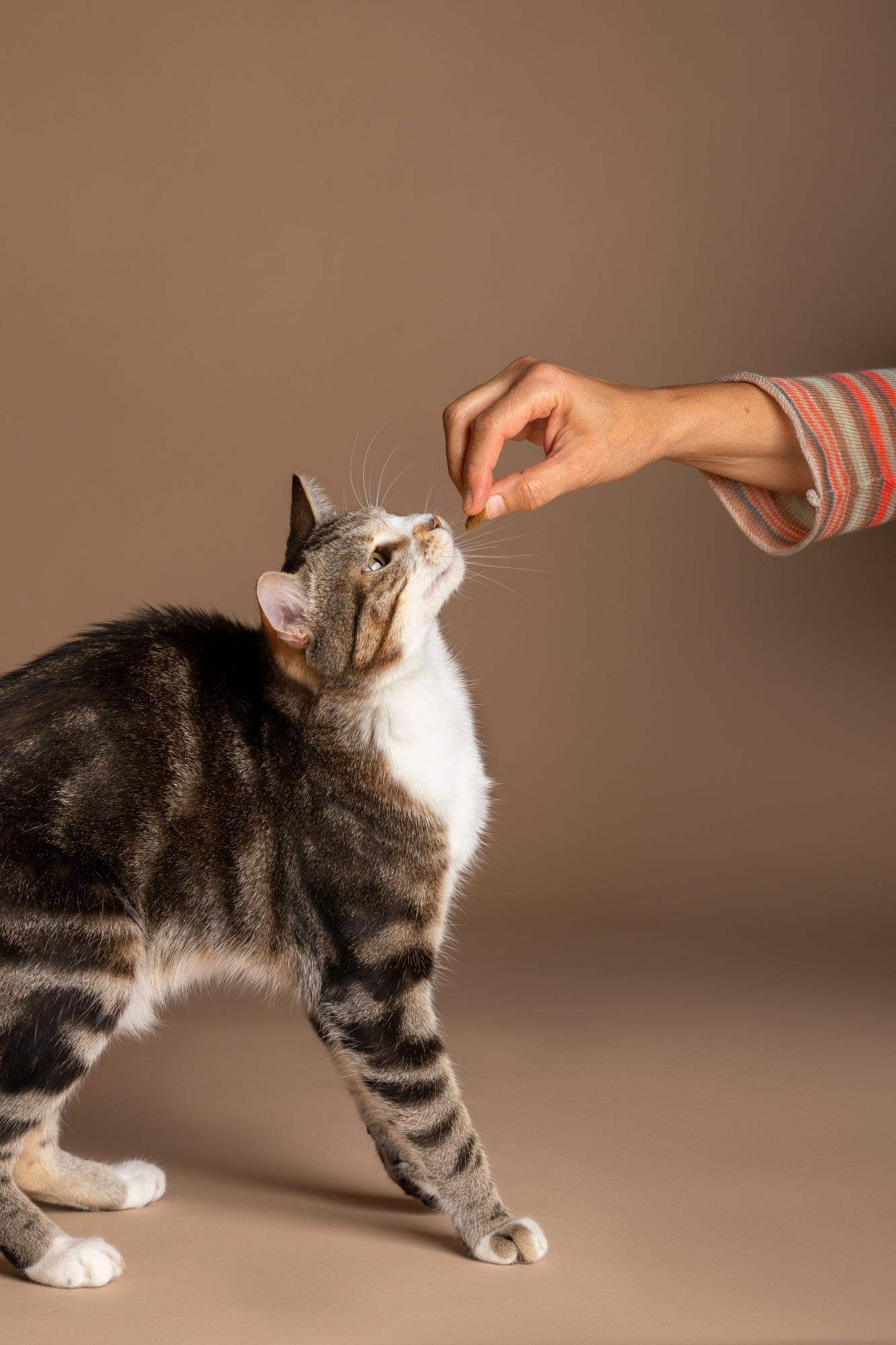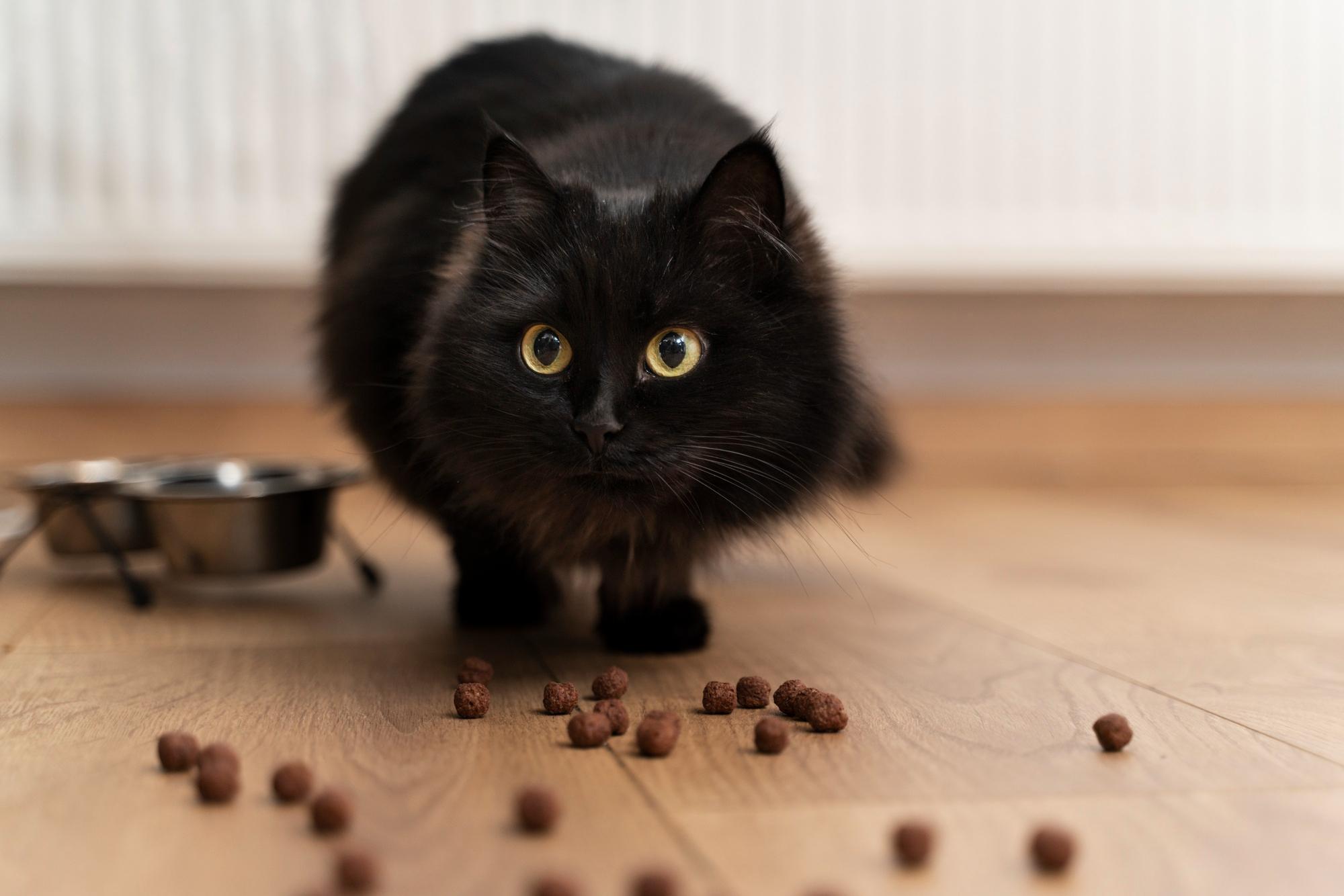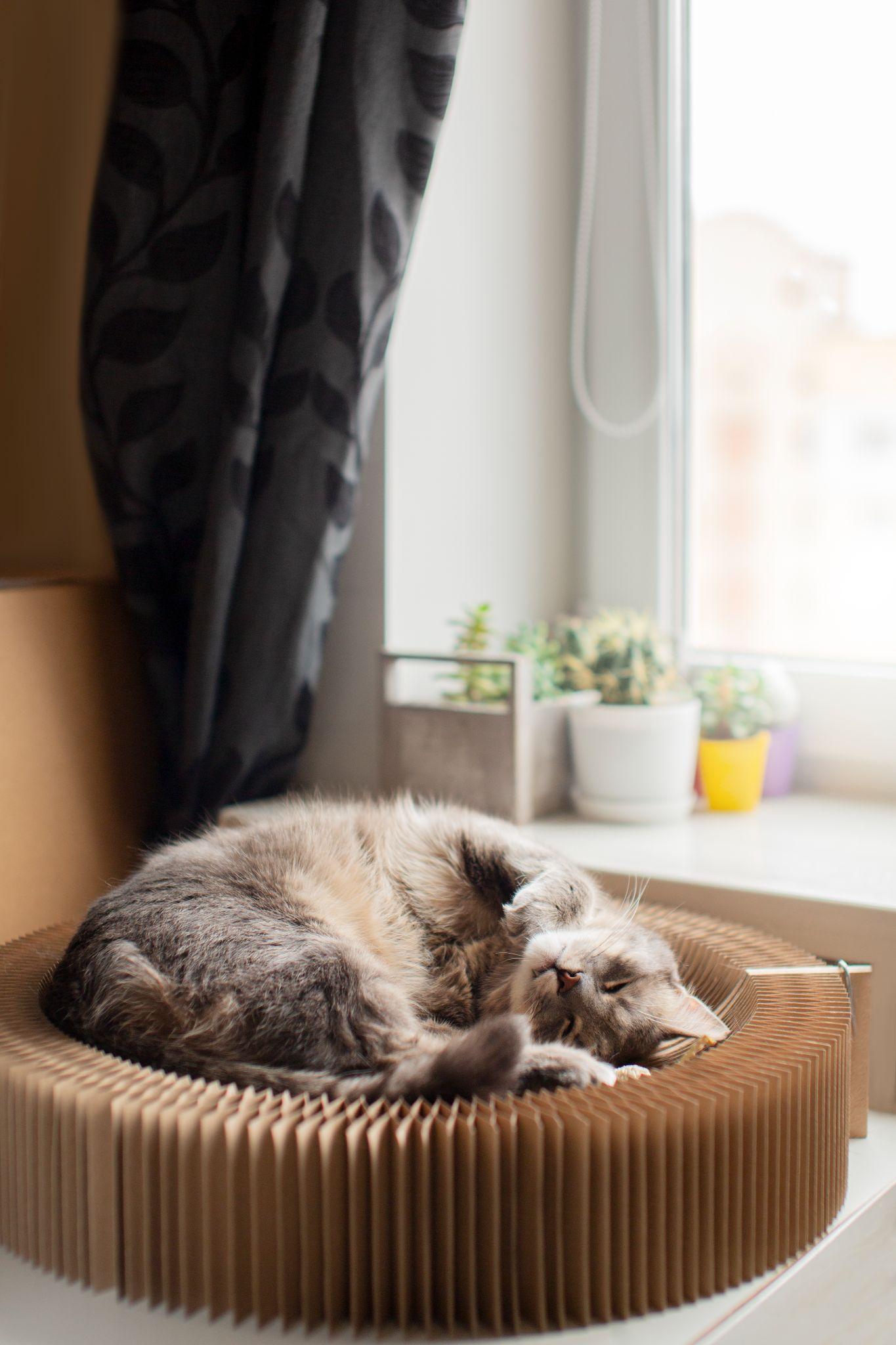Jika hewan peliharaan Anda memiliki perut sensitif, waktu makan dapat berubah menjadi permainan tebak-tebakan setiap hari. Makanan yang tepat dapat membuat perbedaan besar — menenangkan pencernaan mereka, mengurangi rasa tidak nyaman, dan meningkatkan kesejahteraan mereka secara keseluruhan.
Hewan peliharaan dengan perut sensitif sering kali bereaksi buruk terhadap pengisi berkualitas rendah, aditif buatan, atau perubahan pola makan yang tiba-tiba. Untuk anjing dan kucing, sebaiknya beri mereka sumber protein berkualitas tinggi yang mudah dicerna seperti ayam, kalkun, domba, atau salmon. Hindari protein yang diproses secara berlebihan atau dicampur dengan perasa buatan.
Cari makanan hewan peliharaan yang diberi label "bahan terbatas" atau "perut sensitif." Makanan ini biasanya mengandung lebih sedikit bahan, yang dapat membantu mengidentifikasi dan mengurangi potensi iritasi. Bahan-bahan seperti labu, ubi jalar, dan nasi lembut di saluran pencernaan dan menyediakan serat alami yang membantu mengeraskan tinja.
Kucing mendapat manfaat dari makanan yang kaya akan kelembapan (seperti makanan basah atau makanan mentah) karena mereka cenderung tidak minum air. Anjing dapat tumbuh dengan baik dengan kibble khusus yang mengandung probiotik dan prebiotik untuk keseimbangan usus. Apa pun jenis makanannya, pastikan perubahan terjadi secara bertahap selama 7–10 hari untuk menghindari kejutan pada sistem.
Tips Memberi Makan Hewan Peliharaan yang Sensitif:
Perkenalkan makanan baru secara perlahan dengan mencampurnya dengan makanan lama selama beberapa hari.
Hindari memberikan sisa makanan, susu, atau makanan berlemak untuk manusia.
Tetaplah pada jadwal makan yang teratur — waktu makan yang tidak teratur dapat menyebabkan gangguan.
Cobalah diet protein tunggal untuk mengisolasi pemicu alergi.
Selalu sediakan akses ke air segar untuk mendukung pencernaan.
Kesimpulan: Makanan Lembut, Perut Bahagia
Menemukan makanan yang tepat untuk anjing atau kucing yang memiliki perut sensitif mungkin memerlukan sedikit percobaan dan kesalahan, tetapi hasilnya sepadan. Usus yang tenang menghasilkan hewan peliharaan yang lebih tenang dan lebih nyaman. Tetaplah dengan nutrisi yang lembut dan konsisten dan Anda berdua akan merasakan perbedaannya pada waktu makan dan setelahnya.
Vaksinasi adalah salah satu cara paling penting untuk menjaga hewan peliharaan tetap sehat dan terhindar dari penyakit berbahaya. Baik anjing maupun kucing membutuhkan vaksin sejak usia dini, dan perlu dijadwalkan secara berkala.
Berikut panduan lengkap vaksinasi dasar untuk anjing dan kucing di Indonesia:
Vaksin Wajib untuk Anjing
| Jenis Vaksin | Usia Pemberian | Keterangan |
| Parvo & Distemper | 6-8 Minggu | Vaksin pertama |
| DHPP | 8-12 Minggu | Campuran: Distemper, Hepatitis, Parvovirus, Parainfluenza |
| Rabies | > 3 Bulan | Wajib (Peraturan pemerintah Indonesia) |
| Booster DHPP | 1 tahun setelah vaksin pertama | Kemudian 1x setahun atau sesuai anjuran dokter |
| Booster Rabies | 1 tahun setelah vaksin pertama | Lalu setiap 1–3 tahun |
Vaksin Wajib untuk Kucing
| Jenis Vaksin | Usia Pemberian | Keterangan |
| Tricat (FVRCP) | 8-9 Minggu | Feline Viral Rhinotracheitis, Calicivirus, Panleukopenia |
| Rabies | > 3 Bulan | Wajib di sebagian wilayah |
| Booster Tricat | 3–4 minggu setelah vaksin pertama | Lalu setiap tahun |
| Booster Rabies | 1 tahun setelah vaksin pertama | Lalu setiap 1–3 tahun |
Pentingnya Vaksinasi:
* Mencegah penyakit mematikan seperti rabies, parvovirus, distemper, panleukopenia.
* Menjaga hewan tetap sehat dalam jangka panjang.
* Melindungi hewan lain dan juga manusia (zoonosis).
* Biasanya dibutuhkan untuk boarding, grooming, atau daycare hewan.
Tips Penting:
* Simpan buku vaksinasi sebagai catatan medis.
* Jangan memandikan hewan minimal 5 hari setelah vaksin.
* Jika hewan sedang sakit atau stres, tunda dulu pemberian vaksin.
Kapan Harus ke Dokter?
Segera konsultasikan ke dokter hewan jika:
* Belum tahu jadwal vaksin yang tepat
* Ada reaksi setelah vaksin seperti demam, lemas, atau bengkak
* Adopsi hewan baru yang belum pernah divaksin
Maka dari itu, vaksinasi adalah investasi jangka panjang untuk kesehatan dan kesejahteraan hewan peliharaan. Jangan tunda atau abaikan — berikan mereka perlindungan maksimal sejak dini. NatureBridge hadir dengan varian Recovery Immune untuk membantu pemulihan anabul ketika sakit dan juga menjaga imun tubuhnya. Dapatkan NatureBridge Recovery Immune di klinik hewan terdekat.
Kucing yang hidup di dalam rumah (rumahan) memang lebih aman dari bahaya luar seperti kecelakaan atau penyakit dari hewan liar. Tapi bukan berarti mereka tidak butuh perhatian khusus. Tanpa stimulasi dan perawatan yang tepat, kucing indoor bisa stres, obesitas, atau bahkan mudah sakit.
Yuk, simak tips-tips penting agar kucing rumahan kamu tetap sehat dan bahagia!
1. Berikan Stimulasi Mental Harian
Kucing rumahan bisa bosan jika tidak diberi kegiatan. Bosan = stres = perilaku destruktif (seperti mencakar furnitur, mengeong terus-menerus).
Tips:
- Sediakan mainan interaktif seperti laser pointer, bola kecil, atau puzzle feeder.
- Ubah mainan secara berkala agar tidak bosan.
2. Buat Area Panjat dan Tempat Bertengger
Kucing suka memanjat dan melihat dari tempat tinggi — ini naluri alami mereka.
Tips:
- Gunakan cat tree atau rak khusus.
- Tempatkan di dekat jendela agar kucing bisa melihat ke luar.
3. Jaga Pola Makan dan Berat Badan
Karena aktivitas fisik lebih sedikit dibanding kucing outdoor, kucing rumahan cenderung mengalami kelebihan berat badan.
Tips:
- Gunakan takaran makanan sesuai anjuran dokter hewan.
- Hindari terlalu banyak camilan.
- Pertimbangkan makanan khusus untuk kucing rumahan.
4. Rutin Bersihkan Kotak Pasir
Kucing sangat memperhatikan kebersihan. Kotak pasir yang kotor bisa membuat mereka stres atau bahkan buang air sembarangan.
Tips:
- Bersihkan kotoran setiap hari.
- Ganti pasir dan bersihkan kotak sepenuhnya seminggu sekali.
5. Periksa Kesehatan Secara Rutin
Walaupun tinggal di dalam rumah, kucing tetap butuh vaksinasi, pengobatan cacing, dan pengecekan gigi.
Tips:
- Bawa ke dokter hewan setidaknya 1-2 kali setahun.
- Amati perubahan perilaku atau fisik sekecil apapun.
Maka dari itu, kucing rumahan bisa hidup lebih lama dan sehat jika diberikan lingkungan yang kaya stimulasi, pola makan seimbang, dan perawatan rutin. Jangan hanya memberikan tempat tinggal yang aman, berikan juga kehidupan yang berkualitas untuk sahabat berbulu kamu salah satunya dengan memberikan pakan yang baik seperti NatureBridge. Pakan hewan peliharaan super premium yang mendukung kesehatan anabul mu. Dapatkan NatureBridge di official store CPPETINDO
Diet bebas gluten bukan hanya tren kesehatan manusia - mereka juga semakin populer di kalangan pemilik hewan peliharaan. Meskipun tidak semua anjing atau kucing perlu menghindari gluten, beberapa hewan peliharaan mengalami perbaikan nyata dalam kesehatan mereka setelah beralih ke diet bebas gluten.
1. Pencernaan yang Lebih Baik: Diet bebas gluten dapat membantu mengurangi peradangan di usus dan mendukung pencernaan yang lebih konsisten, terutama untuk hewan peliharaan dengan perut yang sensitif.
2. Mengatasi Alergi dan Intoleransi Makanan: Diet bebas gluten dapat membantu menghilangkan gejala alergi dan intoleransi makanan, seperti kulit gatal, infeksi telinga, dan masalah pencernaan.
3. Kulit yang Lebih Sehat dan Bulu yang Lebih Mengkilap: Diet bebas gluten dapat membantu mengurangi peradangan kulit dan mendukung kesehatan kulit dan bulu.
4. Energi yang Lebih Tinggi: Diet bebas gluten dapat membantu meningkatkan penyerapan nutrisi dan mengurangi peradangan, sehingga hewan peliharaan dapat merasa lebih energik dan bermain.
5. Mengurangi Risiko Kondisi Kesehatan Kronis: Diet bebas gluten dapat membantu mengurangi peradangan kronis dan mendukung kesehatan usus dan kekebalan tubuh jangka panjang.
6. Pengelolaan Berat Badan yang Lebih Mudah: Diet bebas gluten dapat membantu mendukung pengelolaan berat badan yang sehat dengan menggunakan bahan-bahan yang lebih seimbang dan rendah glikemik.
Kesimpulan
Diet bebas gluten dapat menjadi pilihan yang baik untuk hewan peliharaan yang mengalami masalah pencernaan, alergi, atau kekurangan energi. Meskipun tidak semua hewan peliharaan membutuhkannya, diet bebas gluten dapat menawarkan pendekatan nutrisi yang lebih seimbang dan mendukung kesehatan hewan peliharaan secara keseluruhan.
Anda mungkin telah melihat label "bebas gluten" pada berbagai produk makanan, termasuk makanan hewan peliharaan. Namun, apa sebenarnya yang dimaksud dengan makanan hewan peliharaan bebas gluten? Seperti halnya manusia, makanan hewan peliharaan bebas gluten berarti tidak mengandung protein tertentu yang ditemukan dalam beberapa jenis biji-bijian.
Apa itu Gluten?
Gluten adalah jenis protein yang ditemukan dalam biji-bijian seperti gandum, rye, dan barley. Meskipun gluten membantu memberikan struktur dan elastisitas pada makanan yang dipanggang, beberapa hewan (dan manusia) memiliki kesulitan mencernanya.
Perbedaan antara Bebas Gluten dan Bebas Biji-Bijian
Seringkali orang bingung antara kedua istilah ini, namun keduanya tidak sama. Makanan bebas gluten masih dapat mengandung biji-bijian seperti beras atau oat, yang tidak mengandung gluten. Sementara itu, makanan bebas biji-bijian menghilangkan semua biji-bijian, baik yang mengandung gluten maupun tidak.
Mengapa Memilih Makanan Bebas Gluten untuk Hewan Peliharaan?
Untuk sebagian besar hewan peliharaan, gluten tidak berbahaya. Namun, beberapa anjing dan kucing mungkin memiliki sensitivitas atau alergi yang dapat menyebabkan kulit gatal, infeksi telinga kronis, atau masalah pencernaan. Makanan bebas gluten dapat membantu mengurangi peradangan dan meningkatkan kesehatan usus.
Siapa yang Membutuhkan Makanan Bebas Gluten?
Hewan peliharaan yang menunjukkan tanda-tanda intoleransi makanan seperti gas, kembung, atau masalah kulit mungkin dapat memperoleh manfaat dari makanan bebas gluten. Beberapa jenis anjing seperti Irish Setter, beberapa jenis terrier, dan retriever lebih rentan terhadap sensitivitas.
Cara Mengetahui Apakah Makanan Hewan Peliharaan Bebas Gluten
Periksa label bahan dengan hati-hati. Cari kata-kata seperti gandum, barley, rye, atau bahan lain yang mengandung gluten. Beberapa merek makanan hewan peliharaan melabeli produk mereka sebagai "bebas gluten", namun tetap penting untuk membaca label dengan hati-hati.
Apakah Makanan Bebas Gluten Hanya Sekedar Tren?
Tidak sepenuhnya. Meskipun makanan bebas gluten telah menjadi lebih populer karena tren diet manusia, banyak pemilik hewan peliharaan melihat perbaikan nyata dalam kesehatan hewan peliharaan mereka setelah beralih ke makanan bebas gluten. Namun, tidak semua hewan peliharaan membutuhkannya, sehingga penting untuk berkonsultasi dengan dokter hewan sebelum membuat perubahan pada diet hewan peliharaan Anda.
Siap memberikan yang terbaik untuk hewan peliharaan Anda? Jelajahi pilihan makanan gluten-free berkualitas dari kami yang diformulasikan untuk kenyamanan pencernaan dan kesehatan optimal. Kunjungi toko resmi kami di Shopee di https://s.shopee.co.id/6KribOTgeo dan temukan produk yang dirancang khusus untuk memenuhi kebutuhan nutrisi sahabat setia Anda.
Sebagai pemilik hewan peliharaan, mengenali tanda-tanda awal bahwa anjing atau kucing Anda sedang tidak sehat sangat penting untuk mencegah kondisi yang lebih serius. Berikut adalah lima tanda umum hewan peliharaan Anda mungkin sakit, beserta tips cara mengatasinya.
1. Perubahan Perilaku
Jika hewan Anda tiba-tiba menjadi pendiam, agresif, atau tampak tidak bersemangat, ini bisa menjadi tanda adanya masalah kesehatan. Mereka mungkin merasa tidak nyaman atau sedang mengalami rasa sakit.
Tips: Amati perilaku mereka selama 1-2 hari. Jika terus berlanjut, segera konsultasikan ke dokter hewan.
2. Nafsu Makan Menurun
Penurunan nafsu makan secara drastis, atau bahkan berhenti makan sama sekali, bisa menjadi tanda adanya gangguan pencernaan, infeksi, atau penyakit lainnya.
Tips: Coba berikan makanan favoritnya. Jika tetap tidak tertarik dalam 24 jam, segera periksa ke dokter hewan.
3. Masalah Pencernaan (Muntah/Diare)
Muntah atau diare bisa disebabkan oleh berbagai hal, mulai dari makanan yang tidak cocok hingga infeksi virus atau bakteri.
Tips: Pastikan hewan tetap terhidrasi. Jika gejala berlangsung lebih dari 1 hari atau disertai darah, segera cari bantuan medis.
4. Perubahan pada Bulu atau Kulit
Kulit yang gatal, merah, muncul benjolan, atau bulu rontok secara berlebihan bisa jadi pertanda alergi, infeksi jamur, atau masalah lainnya.
Tips: Jangan gunakan produk manusia untuk mengatasi masalah kulit hewan. Gunakan sampo khusus hewan dan konsultasikan ke dokter jika tidak membaik.
5. Kesulitan Berjalan atau Terlihat Lemas
Jika hewan peliharaan Anda tampak pincang, lemas, atau tidak mau bergerak, bisa jadi ada cedera atau masalah pada persendiannya.
Tips: Hindari memaksakan gerakan. Biarkan beristirahat dan bawa ke dokter hewan untuk pemeriksaan lebih lanjut.
? Kapan Harus ke Dokter Hewan?
Jangan tunggu terlalu lama. Jika gejala yang dialami hewan peliharaan Anda tidak kunjung membaik dalam 24-48 jam, segera cari pertolongan profesional. Semakin cepat ditangani, semakin besar kemungkinan untuk pulih dengan cepat.
LADIES, memiliki hewan peliharaan seperti kucing memang menyenangkan, ya. Tampilannya yang imut mengundang rasa gemas. Belum lagi tingkah lucu dan manjanya, menjadi hiburan pereda penat. Tak jarang, terjalin ikatan kasih sayang yang kuat antara pemilik dengan kucingnya, hingga muncul sebutan anabul (anak bulu) untuk peliharaan kesayangan ini.
Satu hal penting dalam memelihara kucing, kita perlu memperhatikan asupan makanannya. Sebab, kesehatan dan kesejahteraan kucing bergantung pada nutrisi yang mereka terima setiap hari. Makanan yang baik tidak hanya menjaga kesehatan kucing secara umum, tetapi juga membantu mencegah dan membantu penyembuhan sejumlah penyakit. Berikut hal-hal yang perlu dipertimbangkan dalam memilih produk makanan kucing.
Pahami Kebutuhan Nutrisi Kucing
Kucing adalah hewan karnivora, mereka membutuhkan daging untuk mendapatkan nutrisi yang mereka butuhkan. Nutrisi utama yang harus ada dalam makanan kucing adalah protein hewani. Sumber protein berkualitas tinggi meliputi daging ayam, daging sapi, ikan, dan hati. Protein adalah komponen utama dalam diet kucing. Protein berperan untuk pembangunan otot dan memperbaiki jaringan tubuh. Selain protein, kucing juga membutuhkan lemak, karbohidrat, vitamin, dan mineral.
Baca Label Dengan Teliti
Saat memilih makanan kucing, penting untuk membaca label pada kemasan dengan teliti. Label tersebut memberikan informasi tentang kandungan nutrisi dan bahan-bahan yang digunakan. Pastikan bahan utama adalah sumber protein hewani, seperti daging ayam, daging sapi, atau ikan. Bahan-bahan ini sebaiknya tercantum di bagian atas daftar bahan. Pastikan makanan tersebut mengandung protein, lemak, karbohidrat, vitamin, mineral, dan serat dalam jumlah yang seimbang.
Beberapa makanan kucing mungkin mengandung bahan pengisi seperti jagung, gandum, atau kedelai yang rendah nutrisi dan kurang dibutuhkan oleh kucing. Hindari produk yang mencantumkan bahan-bahan ini dalam jumlah besar. Hindari juga kandungan pewarna, perasa, dan pengawet kimia.
Perhatikan Usia Dan Kondisi Kesehatan
Kucing memiliki kebutuhan nutrisi yang berbeda tergantung pada usia dan kondisi kesehatannya. Pilih makanan yang sesuai dengan tahap kehidupan kucing. Anak kucing misalnya, membutuhkan makanan tinggi protein dan lemak untuk mendukung tumbuh kembangnya. Kucing dewasa dan senior juga memiliki kebutuhan yang berbeda, terlebih untuk kucing yang mengalami gangguan kesehatan tertentu.
Founder Bridge Petcare Jerry Xu menjelaskan, kondisi iklim tropis dan kelembapan yang tinggi di Indonesia, ditambah dengan karakteristik kucing yang tidak suka minum membuat kucing rentan mengalami penyakit kulit dan bulu, juga gangguan saluran kemih. “Berdasarkan survei yang dilakukan di sejumlah klinik hewan Indonesia, penyakit kulit, bulu, dan saluran kencing menjadi gangguan yang sering terjadi pada kucing,” ujar Jerry.
Para pemilik kucing, lanjutnya, dapat memanfaatkan produk makanan yang memang diformulasikan khusus untuk kucing dengan gangguan kesehatan tertentu. Contohnya, seri terbaru Daily Care dari NatureBridge yang baru diluncurkan di Indonesia yaitu Hair & Skin untuk membantu mengatasi masalah kulit dan bulu, Urinary untuk kucing dengan gangguan kemih, serta Mother & Baby untuk kucing hamil, menyusui, dan bayi kucing.
“Seri Daily Care merupakan functional daily pet food yang menggunakan teknologi freeze dried, yaitu proses pembekuan daging asli di suhu -38 derajat celcius selama 26 jam. Semoga, dengan makanan berkualitas yang sesuai dengan usia dan kondisi kesehatan kucing, para pet owner dan hewan kesayangannya dapat hidup lebih sehat, bahagia, dan menua bersama,” kata Jerry.
Pantau Reaksi Kucing
Jangan lupa, ketika memperkenalkan makanan baru pada kucing, pantau reaksi mereka dengan cermat. Perhatikan perubahan aktivitas, kondisi bulu, dan pencernaannya. Beberapa tanda bahwa makanan tersebut cocok untuk kucing antara lain kucing aktif dan energik dan bulu tumbuh sehat. Bulu kucing yang lebat, lembut, dan berkilau menandakan ia mendapatkan nutrisi cukup. Selain itu, perhatikan pencernaannya, kotoran yang normal dan tidak berbau menyengat menandakan asupan makannya cocok untuk pencernaan kucing. Jika kucing menunjukkan tanda-tanda alergi atau mengalami masalah pencernaan, segera konsultasikan dengan dokter hewan dan pertimbangkan untuk mengganti makanan tersebut.
(Sumber: https://mediaindonesia.com/jelita/688378/jaga-kesehatan-kucing-kesayangan-dengan-makanan-tepat)
TRIBUNNEWS.COM, JAKARTA - Memiliki hewan peliharaan menjadi salah satu aktivitas yang menyenangkan dan juga menyehatkan.
Dari jenisnya, hewan peliharaan yang paling banyak dipunyai publik Indonesia ialah kucing, kemudian diikuti burung, ikan, dan anjing.
Berdasarkan hasil survei, kepemilikan kucing oleh publik Indonesia mencapai 47 persen yang sejalan riset ini sejalan dengan temuan jajak pendapat Litbang Kompas pada Januari 2020.
Kucing mempunyai tingkah laku yang menggemaskan dan penampilannya yang lucu menjadi daya tarik hewan ini untuk dipelihara.
Bahkan banyak influencer yang memelihara dan mengadopsi kucing domestik menjadi kucing yang sangat lucu dan terawat.
Menurut International Federation for Animal Health Europe (IFAH), populasi kucing domestik di seluruh dunia terdapat sekitar 220 juta ekor.
Selain menjadi hewan peliharaan di rumah, pet owner yang hobi berjalan sambil mengajak anabul ke tempat perbelanjaan seperti mall juga menjadi tren saat ini.
"Juga makin banyak mall pet friendly yang menyediakan fasilitas seperti area taman terbuka untuk anabul diajak jalan-jalan," kata Owner Bridge PetCare, Jerry Xu di sela-sela peluncuran series terbaru Daily Care dengan tiga produk yaitu Nature Bridge Hair & Skin, Urinary, dan Mother & Baby di Jakarta, Kamis (25/7/2024).
Fakta ini menjadi bukti bahwa pertumbuhan pet lover Indonesia meningkat sehingga usaha pet shop menjadi peluang yang menjanjikan dengan semakin meningkatnya pet lover di Indonesia.
Namun di sisi lain, kucing terkadang menghadapi masalah kesehatan.
"Apalagi dengan kondisi iklim tropis dan kelembapan yang tinggi di Indonesia, ditambah dengan karakteristik kucing yang tidak suka minum bisa memicu gangguan kesehatan kucing," kata Jerry.
Dikatakannya, berdasarkan survei internal yang dilakukan di klinik hewan Indonesia, penyakit kulit bulu dan saluran kencing menjadi penyakit yang sering dialami kucing.
Ini pula yang mendorong NatureBridge memperkenalkan series terbaru Daily Care, functional daily pet food yang menggunakan teknologi freeze dried melalui proses pembekuan daging asli di suhu -380C selama 26 jam.
“Kami berharap berharap para pet owner dan hewan kesayangannya dapat hidup lebih sehat, bahagia, dan menua bersama,” tegas Jerry.
Artikel ini membahas pentingnya mempertimbangkan potensi risiko kesehatan dalam memberi makan anjing dengan diet bebas gandum dan berkonsultasi dengan dokter hewan untuk memastikan anjing mendapatkan semua nutrisi yang diperlukan dalam makanannya. Beberapa makanan anjing bebas gandum mungkin kekurangan nutrisi penting seperti taurin, yang dapat menyebabkan masalah kesehatan seperti kardiomiopati dilatasi. Artikel ini merekomendasikan untuk bekerja sama dengan dokter hewan untuk menentukan diet terbaik sesuai kebutuhan individu anjing. Kami merasa penting untuk meluangkan waktu membahas topik makanan anjing bebas gandum.
Meskipun beberapa pemilik hewan peliharaan mungkin memilih memberi anjing mereka diet bebas gandum karena berbagai alasan, seperti alergi makanan atau preferensi pribadi, penting untuk memahami bahwa diet bebas gandum mungkin bukan pilihan yang paling sehat untuk semua anjing.
Pertama-tama, penting untuk dicatat bahwa gandum tidak selalu buruk untuk anjing. Faktanya, banyak jenis gandum, seperti nasi dan oat, dapat memberikan nutrisi penting dan serat yang bermanfaat bagi kesehatan anjing. Makanan anjing komersial bebas gandum juga mungkin menggantikan gandum dengan bahan lain, seperti kentang atau kacang polong, yang juga dapat menyebabkan masalah kesehatan jika digunakan secara berlebihan.
Salah satu kekhawatiran terkait diet bebas gandum adalah potensi hubungannya dengan kondisi jantung yang disebut kardiomiopati dilatasi (DCM). Meskipun penyebab pasti DCM masih dalam penelitian, ada bukti yang menunjukkan bahwa diet yang kekurangan nutrisi tertentu, seperti taurin, bisa menjadi faktor penyebab. Diet bebas gandum sering kali mengandung sumber protein baru, yang dapat menyulitkan anjing untuk mendapatkan cukup taurin dan nutrisi lainnya.
Kami selalu menyarankan untuk berkonsultasi dengan dokter hewan sebelum membuat perubahan signifikan pada diet anjing Anda. Tim dokter hewan berpengalaman kami dapat membantu Anda menentukan diet terbaik untuk kebutuhan individu anjing Anda, dengan mempertimbangkan faktor-faktor seperti usia, ras, dan kondisi medis yang mungkin mereka miliki.
Sebagai kesimpulan, meskipun diet bebas gandum mungkin cocok untuk beberapa anjing, penting untuk mempertimbangkan potensi risiko kesehatan dengan hati-hati dan bekerja sama dengan dokter hewan untuk memastikan anjing Anda mendapatkan semua nutrisi yang diperlukan dalam makanannya.
It’s true what they say about pets being with us for a “good time, not a long time,” so we are here with some tips on how to extend the life and wellbeing of your pet!
1. Maintain your pet’s teeth: Tooth decay is a very common, yet dangerous health problem for both dogs and cats. Did you know that tooth decay not only creates dental problems, but it can cause infections throughout the body, especially in the heart and kidneys? This is a commonly overlooked health issue our pets experience which can turn fatal, so it’s best to stay on top of your pet’s dental health and incorporate daily brushing into your pet care routine.
Are you wondering how to get your pet acclimated to daily tooth brushing? At Brook Farm Veterinary Center we recommend brushing your pet's teeth at least a couple of times per week to help keep them clean. Please do not use human toothpaste as it has ingredients that are harmful to our pets. There are pet specific toothpastes and toothbrushes you can purchase to get the job done safely. If your pet has noticeable buildup of plaque, then you should book a dental appointment with Brook Farm’s team of experienced staff as soon as you have time!
2. Keep your pet at their ideal weight: Obesity is a nationwide crisis, not only affecting humans, but our furry companions too. Work with your veterinarian to determine your pet’s ideal weight. Once that ideal weight is established you can easily maintain that weight by keeping track of how much they eat and how often they exercise on a regular basis.
3. Give your pet regular exercise: Dogs need to exercise the same way people do. Ideally, your dog should get at least an hour of exercise each day to improve their overall health and help regulate their weight. This can be in the form of walks in your neighborhood, visits to the local dog park, doggy daycare, or playing a couple games of fetch outside. Cats on the other hand are known to be less active than dogs. A couple ways you can entice your cat to exercise would be to use catnip to get them running around, getting a cat tree that they can climb on, and playing with lasers that they will surely try to catch!
4. Get regular exams and essential vaccinations: The early phase of a serious condition can quietly develop inside a perfectly healthy-looking dog or cat. And since pets age faster than we do, their diseases can also advance more quickly. This is the main reason that getting your pet to the veterinarian for regular exams and staying on top of their essential vaccines are crucial.
5. Give your pet time to relax: Everyone needs time to relax; this includes our pets. It’s important to remember that as much as we crave a good work / life balance, our pets require a good balance too. It takes a lot of energy to keep us humans entertained, so our furry friends need some time to rest without distractions.
Incorporating all of these elements into your pet parenting routine will help extend your pet’s quality of life. Another way you can show your furry companion you care, is bringing them to a trusted facility, filled with dedicated and caring people.
Pet parents know there are some things that cats shouldn’t eat. What they might not realize is that many more toxins than they know about are present in their cats’ environment. Food, medication, house plants and cleaning products can be dangerous to cats, but our feline friends could access them at any moment.
To prevent poisoning in cats, pet parents should learn about toxic substances and the symptoms associated with them. When you’re more aware of your cat’s surroundings, you’re better equipped to seek medical help if poisoning does occur.
Here are the most common household toxins to watch out for in your home.
Ingredients in human food
Cats are very curious creatures. If they find food, they might want to taste it. A cat may steal bits of food from plates and open containers while their owner is in another room. Some cats have also been known to rummage through trash bins and fish out discarded table scraps. In other cases, a pet parent or guest may inadvertently offer food that’s actually poisonous to cats.
Cats can develop any number of symptoms from eating toxic food. The symptoms range from mild to life-threatening, and they depend on which toxin the cat ingested. For example, cats that eat chocolate may experience vomiting, diarrhea, panting or a rapid heart rate. Garlic often causes anemia in cats, which is characterized by lethargy, fast breathing and yellow gums. Any toxic food can trigger a range of respiratory, neurological and gastrointestinal problems, as well.
The following foods are highly toxic to cats:
- Chocolate
- Garlic
- Onions
- Leeks
- Chives
- Grapes
- Unripe tomatoes
- Raw potatoes
- Alcohol
Indoor and Outdoor House Plants
House plants (both indoor and outdoor) also pose a risk to your cat’s health. Plants are a common cause of poisoning because cats can come into contact with them while the owners aren’t watching. Cats may nibble the flowers, stems or leaves of potted plants sitting on low tables or shelves. Indoor outdoor cats may roam the gardens and come across plant species that are highly poisonous.
Much like with human food, the symptoms of plant poisoning depend on the species that was ingested. For instance, lilies can cause drooling, lethargy, loss of appetite, digestive upset and kidney failure. Generally speaking, many plant species cause inflammation in the skin, throat and mouth. The cat may also experience coughing, sneezing or a red, itchy rash.
Here are some common plants to avoid:
- Lily
- Amaryllis
- Aloe vera
- Daffodil
- Tulip
- Hyacinth
- Pothos
- Poinsettia
Pet and Human Medications
Many cases of poisoning stem from pet and human medications. Owners might accidentally leave open pill bottles on the counter. Some owners will administer human pain killers and probiotic supplements in the hopes that they’ll work on their cats. Humans and cats metabolize substances differently, which means the ingredient levels in human medications are way too high for cats. Even medication designed for cats can lead to poisoning if they’re given in the wrong dose.
Drug poisoning usually causes gastrointestinal symptoms, which include vomiting, diarrhea and general discomfort in the abdominal area. Some cats may also develop a fever, lethargy or a rapid heartbeat. Excessive vomiting and diarrhea often lead to dehydration, a serious side effect of drug poisoning that can quickly turn fatal.
Keep these medications in a safe location away from your cat:
- Aspirin
- Acetaminophen
- Ibuprofen
- Antidepressants
- Melatonin
- Supplements
- Flea and tick treatments
Household cleaners and yard products
Household products contain dangerous chemicals that are highly poisonous to cats. They could inhale airborne particles from air fresheners, cleaning sprays or essential oil diffusers. Cats that venture outside could come into contact with fertilizer, pesticides or antifreeze, which they ingest by grooming their fur.
These products can lead to many common signs of poisoning—vomiting, diarrhea, lethargy, fever, dehydration and rapid heartbeat, among others. Some essential oils may cause additional symptoms depending on which plant species they’re derived from. For instance, eucalyptus oil may cause drooling, seizures and confusion, while peppermint oil is linked to liver failure and damage to the nervous system.
Make sure your cat doesn’t come into contact with any of the following products:
- Essential oils
- Fertilizers
- Antifreeze
- Cleaning sprays
- Laundry detergent
- Pesticides
- Rodenticides
Many toxins exist in your cat’s environment. You can keep your cat safe by recognizing which substances are poisonous and placing them in hard-to-reach locations. Even still, there’s always a chance poisoning could occur, so it’s important to know the symptoms and report them to your vet right away. Acting fast can save your cat’s life!
Source: https://petwellbeing.com/
No matter how long you’ve been a cat parent, deciphering your feline friend’s emotions can sometimes feel like trying to solve a complex puzzle. Our four-legged companions have a unique language of their own. Thankfully, with a little insight, you can learn to read the signs that indicate when your cat is happy, content and thriving. From subtle body language to joyful behaviors, discover the fascinating world of feline happiness.
Reading the signs of a happy cat
How can you tell if your furry friend is comfortable and happy? Here are the telltale signs you’re raising a joyful cat.
Relaxed body language: A relaxed and happy cat will have soft, smooth fur and a body that is neither tense nor stiff. They might sprawl out comfortably on their side or back, showing that they feel secure and at ease in their environment.
Purring: Ah, the soothing sound of a purring cat. While it’s true that cats purr for various reasons, it’s usually a sign of contentment. If your cat purrs while cuddling with you or when you’re petting them, it’s a clear sign they’re feeling happy.
Playfulness: Playfulness is a strong indicator of a happy cat. Engaging in playful behaviors like chasing toys, pouncing and even “hunting” objects (or you!) around the house suggests that your feline friend is enjoying life and feeling mentally stimulated.
Slow blinking: Cats often express trust and affection through slow blinking. If your cat blinks at you in a slow, deliberate way, they’re essentially sending you a feline kiss. Acknowledge it with a slow blink in return!
Tail position: The position of your cat’s tail can reveal a lot about their mood. A tail held high with a slight curve at the tip (like a question mark) indicates confidence and happiness. A “neutral” posture, with the tail held gently behind them and curved slightly, shows that your cat is content.
Kneading: Kneading—when a cat rhythmically pushes and pulls their paws against a soft surface—is a behavior inherited from kittenhood. It’s a sign of comfort and contentment, often reminding them of nursing from their mother.
Relaxed ears and eyes: Happy cats have relaxed ears that are facing forward or slightly to the side. Their eyes will be half-closed, indicating relaxation and trust.
Signs of feline stress, anxiety or discomfort
While understanding the signs of a happy cat is crucial, it’s equally important to recognize the symptoms of stress and anxiety in your furry companion. Cats are masters of masking illness and stress, but subtle changes in their behavior and body language can help clue you in.
“Airplane” ears: When your cat is scared or distressed, their ears might flatten toward the back of their head or to the side. This is often called “airplane” ears because they resemble the wings of a plane. Puffy or thrashing tail: Your cat’s tail will also indicate aggression, fear and distress. Watch the way it moves—if it’s thrashing back and forth, something might be agitating your furry friend. Cats may also puff up their tails or tuck them when frightened and hold their tail stiff and straight when aggressive.
Aggressive behavior: Uncharacteristic aggression toward you, other pets or even themselves can signal that your cat is experiencing emotional distress. Your cat might growl and hiss, swat or bite to show aggression.
Changes in appetite: A sudden decrease or increase in your cat’s appetite can indicate stress or health issues. Any changes in eating habits should be monitored and addressed right away.
Excessive grooming: Cats may groom themselves more than usual when stressed. Excessive grooming can lead to hair loss, skin irritation and even digestive problems.
Hiding: If your normally social cat suddenly becomes reclusive and spends more time hiding, it’s a sign they might be feeling sick or anxious.
Changes in litter box behavior: Any changes in litter box habits, such as avoiding the litter box or urinating outside of it, can be indicative of underlying stress or health issues.
If you notice signs of anxiety, stress or aggression in your cat, don’t ignore them. Cats get stressed for a variety of reasons—some random and fleeting, and others serious and long-term.
Determine whether you cat’s anxiety is sudden or normal for them. Some cats take time to adjust to new environments and won’t display happy behaviors right away after adoption. Others have chronic anxiety that will require persistent treatment. You might be able to help calm them with environmental enrichment and herbal supplements. Ingredients like chamomile, valerian root and L-tryptophan are known for their calming effects on cats.
However, if your cat is usually happy and relaxed, sudden anxiety might indicate something more serious, like a health problem. Address any household or lifestyle things that might be stressing your cat out, like loud noises or other aggressive pets. Consult with your vet if the anxiety continues to check on their health and build a stress management plan.
Clue in to your cat’s mood
While it’s gratifying to know that your cat is content and happy, it’s equally important to remain attuned to all their emotional needs. By understanding your cat’s body language and behaviors and taking proactive steps to address anxiety and stress, you’ll help them live as happy a life as possible!
Source: https://petwellbeing.com/
Personalized medicine – care tailored to individual needs of patients – is rapidly gaining traction in human health care and veterinarians are embracing the concept as well. The Foundation has several studies in progress that could help veterinarians customize treatment and optimize care for cats.
A core feature of personalized medicine is understanding a patient’s genetic makeup – their DNA. Without this information, it would be difficult, if not impossible, to deliver personalized care.
Since 2006, we’ve funded 52 studies on all aspects of understanding the feline genetic code. Our studies fall into two basic categories: studies looking at genetic mutations associated with specific diseases and studies on determining the genetic sequence (code) of all the DNA present – almost 20,000 genes in our feline friends!
Our researchers found a gene responsible for heart disease in Sphynx cats, a gene linked to the cartilage abnormalities seen in some breeds, and even a suggestion of a genetic link to diabetes.
In addition, our researchers have made a huge contribution to decoding the complete genetic make-up of the cat – a massive feat of genetic wizardry!
Current research includes work on learning more about how genetics influences a cat’s response to clopidogrel, a drug used to prevent deadly blood clots.
Although the cat is finally catching up to the dog when it comes to genetic research, we still have a long way to go. But we’re confident that the secrets we’re unlocking now will make a big impact in the future for feline health.
Stress has negative consequences on the health and well-being of animals, and shelter cats are especially vulnerable to stress-induced health problems such as upper respiratory infections. In addition, stress can make cats exhibit unwanted behaviors, including biting and scratching. Cats that are ill, or have behavior issues, are less likely to be adopted. Sadly, these conditions can lead to euthanasia.
Providing hiding spaces has been proposed as one way to reduce stress in cats in these types of environments. A new study will test this theory by giving shelter cats access to a small, enclosed cat den within their larger kennel space, to see if the addition of this simple tool can improve outcomes for these animals.
"Euthanasia rates for cats in shelters remain stubbornly high, with estimates of up to 70% by some organizations, including the ASPCA," said Dr. Kathy Tietje, Chief Program Officer at Morris Animal Foundation. "We need to take action to help more cats make their way to their forever homes. This study is an important step."
The study is part of a unique partnership with Morris Animal Foundation and the Dumb Friends League, both based in Denver, and EveryCat Health Foundation.
"We’re excited to be conducting a field trial of this simple but potentially powerful intervention," said Katie Parker, Vice President of Sheltering at Dumb Friends League. "We know that improving health has a direct correlation with adoptability. Anything we can do to improve our cats' health is a win for everyone, but especially our cats."



